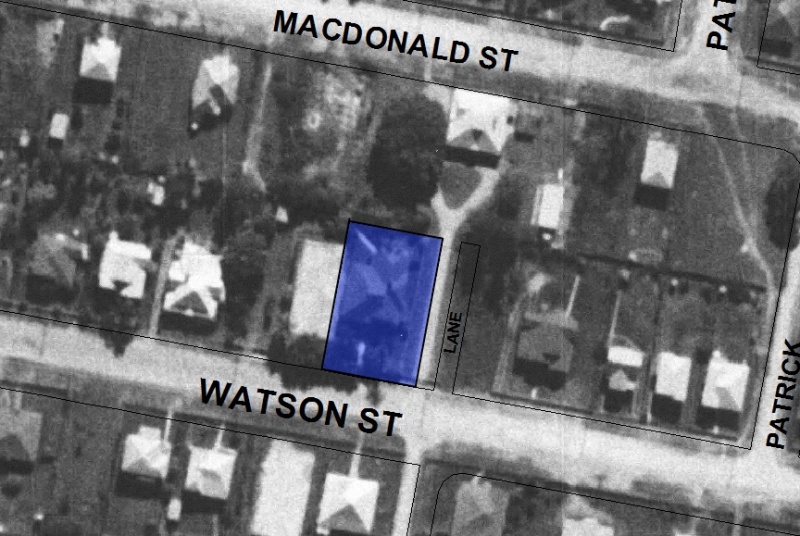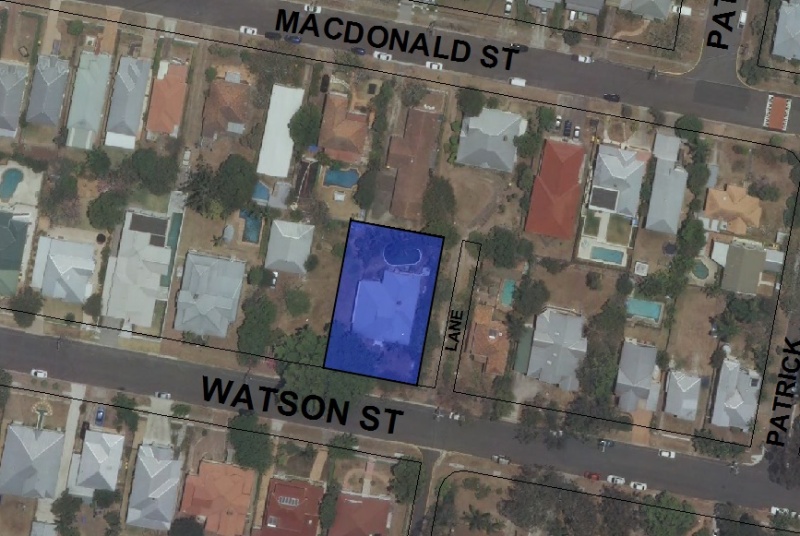Addresses
Type of place
House
Period
Federation 1890-1914
Style
Bungalow
Addresses
Type of place
House
Period
Federation 1890-1914
Style
Bungalow
This Federation style bungalow was constructed circa 1908 for local jeweller, Ebenezer Jones, who became the first resident of Watson Street. The house was first named ‘Croyde’ circa 1918 by its second owners, the Brier family.
Lot plan
L102_RP13127; L103_RP13127; L195_RP13127
Key dates
Local Heritage Place Since —
Date of Citation —
Construction
Roof: Corrugated iron;Walls: Timber
Criterion for listing
(A) Historical; (D) Representative; (E) AestheticInteractive mapping
Lot plan
L102_RP13127; L103_RP13127; L195_RP13127
Key dates
Local Heritage Place Since —
Date of Citation —
Construction
Roof: Corrugated iron;Walls: Timber
Criterion for listing
(A) Historical; (D) Representative; (E) AestheticInteractive mapping
History
Camp Hill saw European settlement from the 1860s. The area was subdivided into allotments repeatedly but was only very sparsely inhabited until the first years of the twentieth century. Ebenezer Jones bought five allotments of land totalling 1 rood 32 perches (1822m2) in Camp Hill on 15 June 1908. Jones, a resident of South Brisbane, mortgaged his new land purchase on 30 December 1908 and obtained a loan of ₤320. It is likely with this money that Jones funded the erection of his residence at 84 Watson Street, Camp Hill. Post Office records suggest that his house, built in a Federation style, was completed by 1909.
Like other centres in Australia, Brisbane experienced a strong growth in prosperity and population after the economic depression of the early 1890s until the outbreak of WWI in 1915 – the Federation era. Notably, architecture of this period embraced Australiana, inventing and incorporating elements and decoration that celebrated Australia. This extended into garden design with a marginally more natural approach to design and an awareness of native flora and fauna. The architecture of the period is distinguished through its comprehensive use of timber including elaborately detailed timber verandahs with a filigree of pattern and light. Verandah forms were manipulated to provide wider areas so that, as well as being functional weather protection, they were commodious and readily occupiable. Internally, the house layouts of this period were generally traditional with little alteration from the previous period. The house faced the street, with principal rooms at the front and secondary/service rooms at the rear.
During the Federation era, Camp Hill remained largely agricultural or undeveloped due to its distance from Brisbane but saw increasing occupation by wealthy residents on the desirable high land or ridgelines. From 1912 a steam tram serviced the area until being replaced after the electrified tram system was extended into the area in 1925. This spurred development and the area gradually became a distinct locality by the 1930s.
In 1915 Jones sold 84 Watson Street to Ada Victoria Dean, who sold it in 1917 to Royston Carr Brier and his wife Clara Garland Brier. The Briers named the property Croyde, with this name appearing in the 1918-19 Queensland Post Office Directories. By 1938 the Briers had built a tennis court on the area of the garden immediately west of the house (Lot 101). Croyde passed through many owners over the following years.
In 2015 Croyde survives on its original land holding as an intact example of the type of houses built for wealthy residents in Brisbane during the Federation era and illustrates the early residential development of Camp Hill.
Statement of significance
Relevant assessment criteria
This is a place of local heritage significance and meets one or more of the local heritage criteria under the Heritage planning scheme policy of the Brisbane City Plan 2014. It is significant because:
References
-
Brisbane City Council, Properties on the Web, website, post-1946 building cards
-
Brisbane City Council, 1946 aerial photographs.
-
Brisbane City Council, Sewerage Maps, 24 July 1938
-
Brisbane City Council’s Central Library, local history sheets
-
Department of Natural Resources, Queensland Certificates of title and other records.
-
John Oxley Library, Brisbane Suburbs – Estate Maps
-
Queensland Post Office Directories, 1868-1949
Citation prepared by — Brisbane City Council (page revised June 2022)

